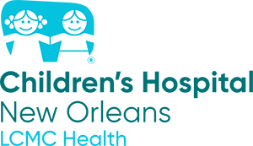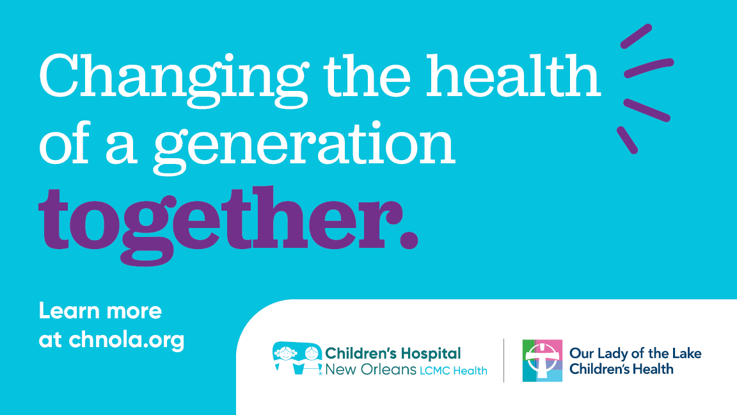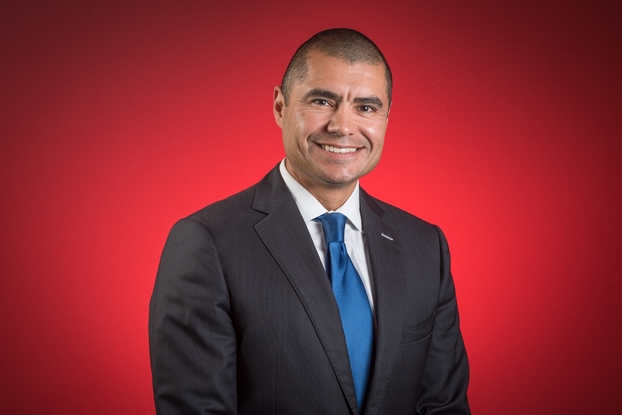Sebastian’s Story: Breathing Easier
- Category: Cardiology, General Health, Patient Stories
- Posted on:

When Tamera and Shane Grant became pregnant in February 2022, they were ecstatic. It was their first child. Things went well until they didn’t. On an otherwise average day in May Tamera says, “I felt like I was going to the bathroom but I wasn't. I didn’t really know what was going on.”
She scheduled an appointment with her obstetrician at which she had testing done. They heard a heartbeat at the next appointment so the doctor said no further testing was necessary at this point.
At her 20-week anatomy scan in June, everything changed.
Doctors realized Tamera’s amniotic sac had ruptured. Tamera later took solace in learning this is just something that can happen - it was not the result of anything she did or didn’t do. “Of course, I was thinking, how did this happen,” she said. Tamera was immediately admitted to the hospital. “I was just scared,” she said.
She would remain in the hospital for three days. During that time, doctors explained that Tamera and Shane were faced with the most serious of decisions: Only the most heroic measures would save their baby. “I could go ahead and terminate the pregnancy if I wanted to,” Tamera said. “They told us everything that could happen to him: He could be born with clubbed feet, or his joints could be fused together because he didn't have room to move around in the womb or he could even have severely underdeveloped lungs.”
All this weighed heavily on Tamera and Shane. She never wanted to give up. “It was a lot to process,” she admits. They wanted to give the baby every chance they could. “It was my faith in God, pretty much,” Shane said. Regarding terminating the pregnancy, Tamera says, “My husband was like, ‘Oh no. That’s not an option.”
So doctors sent them home and told her to stay on strict bed rest for two weeks. Shane was tasked with giving her regular Heparin shots to prevent blood clots in her legs while she was in bed. They were also told to listen regularly for the baby’s heartbeat and to monitor Tamera’s temperature. Continuing with the pregnancy could result in a risk to Tamera due to the possibility of infection related to the rupture of the amniotic sack. Doctors cautioned them that should anything not look or sound normal they should come right back to the emergency room.
Tamera and Shane had planned a gender reveal but with all that was happening, they decided to cancel it. There was not enough amniotic fluid surrounding the baby so they could not see the baby’s gender on an ultrasound. They only found out after Tamera decided to have a blood test. “We both wanted a boy, so we were excited,” she said.
On July 4, they checked back in at the hospital. They wanted to keep the baby inside her until 34 weeks if possible. All this was happening at the height of the pandemic. Then Shane got Covid. Despite best efforts, Tamera went into labor on July 10. She remembers telling Shane she didn’t care if he was still testing positive: ”I’m like, ‘Get to this hospital now,’ double mask up, because this baby is coming!” On July 12, Sebastian was born at 24 weeks and five days of gestation. He weighed just one pound, 14 ounces. He was not breathing on his own. Doctors intubated him right away. They put him on a ventilator in the NICU, but doctors were growing concerned. “They did explain to me that he may have to go on an oscillator which is only at Children's Hospital,” Tamera said. By 10 p.m. that night, doctors told Tamera and Shane that Sebastian’s lungs had collapsed. They were able to stabilize him but before she knew it Sebastian was taking his first helicopter flight ever and it was to Children’s Hospital New Orleans.
Tamera had to wait to be discharged until the next day. She went straight to Children’s. Sebastian was on a ventilator for the first two weeks. He was doing well. But then he developed an infection and he had to be placed on high-frequency oscillatory ventilation to aid in breathing.
“This is me, two weeks into the NICU not knowing what any of this means,” said Tamera. “I’m trying not to be nervous.” He was fighting the oscillator. Doctors told Tamera they would need to sedate Sebastian to get him onto the oscillator properly. It was the only way to get Sebastian to allow the oscillator to do the breathing for him. ‘He looked lifeless. He looked so tiny at that time,” said Shane.
They drew strength from the NICU nurses who gave them hope. “They told us ‘It’s a rollercoaster. They said to enjoy the ‘ups’ and not dwell on the ‘downs’.” There were both. In the first two weeks, they discovered bleeding in his brain called an intraventricular hemorrhage. It was grade 1 and they watched it for the first month of his life before it resolved itself. Next, he tested positive for an E.Coli infection so they moved to a private room and added antibiotics to his regimen in an effort to limit transmission to another child. After two weeks, doctors stopped the oscillator and began a steroid therapy that is supposed to help the baby’s lungs by reducing inflammation. Within just days, Sebastian was extubated. He did better but relapsed and had to be intubated again. This cycle repeated: his levels of oxygen and carbon dioxide normalized with every intubation. Every time they extubated him, his carbon dioxide levels would jump.
In August, they had to repair a congenital heart defect called a patent ductus arteriosus (PDA). The PDA is an opening between the aorta and pulmonary artery that doesn’t close properly after birth, allowing extra blood flow to the lungs. If the PDA is large, too much blood goes to the lungs and the baby can have a harder time breathing and feeding. After a successful closure, Sebastian was doing better, but his breathing became more and more of an issue again and he had to be placed once again on a ventilator. They would intubate and extubate again. Neither his oxygen nor his carbon dioxide levels were where they needed to be. Doctors determined he had not only a UTI but also pulmonary hypertension. He was put back on a ventilator and they tried steroids again. His oxygen levels would be good but his carbon dioxide was too high. Doctors decided he needed another tracheotomy. He was immediately doing better once the trach was inserted. By day three after the surgery, they were weaning him off his pain meds and sedatives. “He’s six months old at this point. He’s 15 pounds and he's doing amazing,” Tamera remembers. Sebastian’s parents began training on the care and use of the trach tube in preparation for bringing him home for good.
During these last few months in the hospital, Sebastian had pneumonia. He had rhinovirus. He struggled with a 104-degree temperature and with a central line IV that became infiltrated.
Finally, his condition improved. He needed to be weaned off medications safely before doctors could send him home. Tamera and Shane even had to do a “home trial” period where they were still at the hospital with Sebastian, showing they could properly take care of his trach without assistance.
Sebastian came home in May - ten months after he was born. “We came home and it's been great to be home,” said Tamera. “He's trying to talk and he's hearing his voice. Now that he's home, he's pushing his legs through his crib. He's rolling over. He wants to sleep on his stomach when I put him back on his back,” said Tamera. Small signs of progress indicate just how far Sebastian has come.
Sebastian’s parents note that each of the doctors who worked with their baby worked in concert and not only gave him the highest levels of care but helped them understand what Sebastian was going through and how best they could help him. “The staff of Children’s is SO awesome in the NICU,” said Sebastian’s father, Shane. “We’re like family now,” Tamera says of all the doctors, nurses and other staff at Children’s Hospital. It's a family with ties well beyond the hospital where little Sebastian’s life began.



